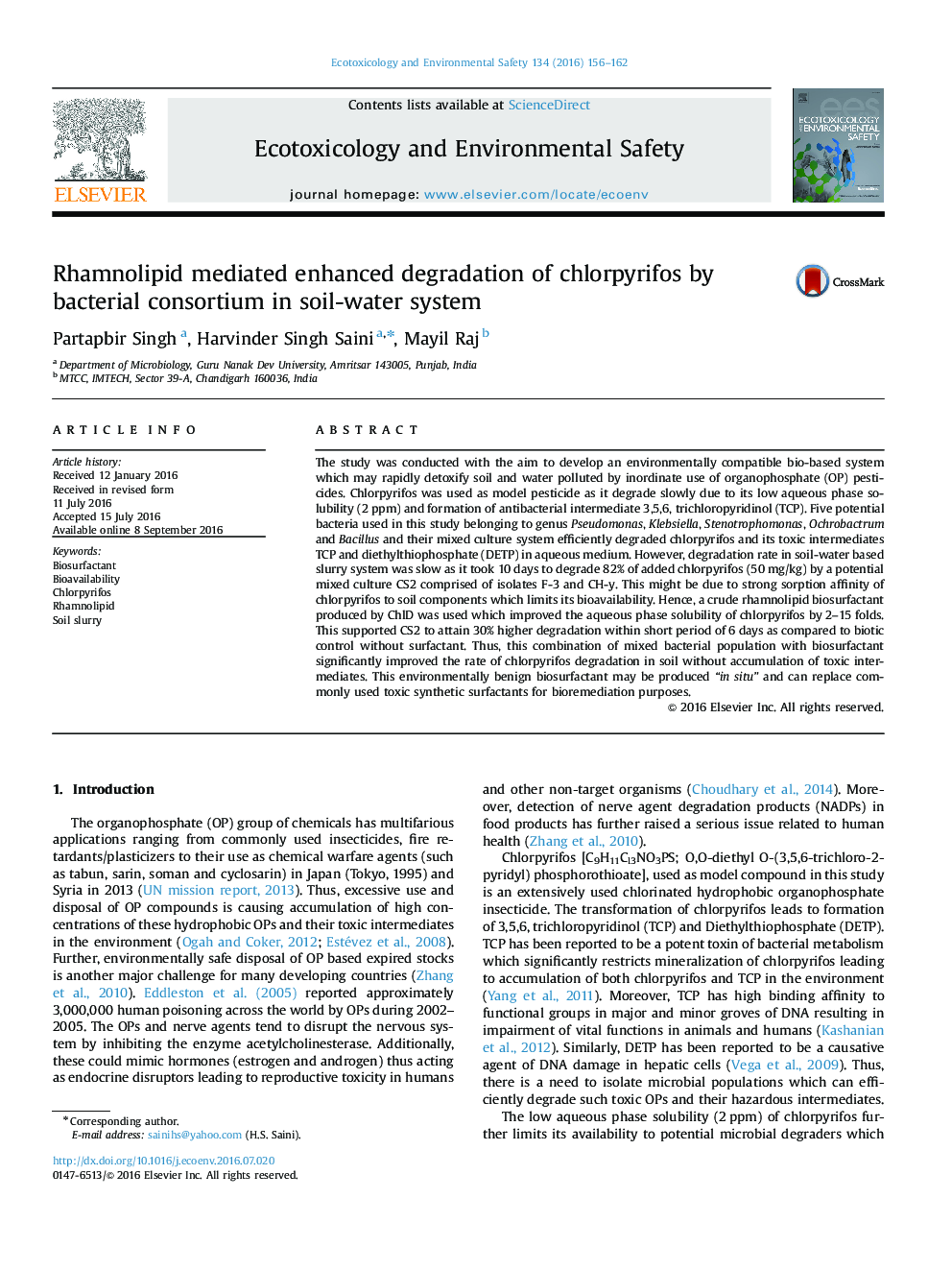| کد مقاله | کد نشریه | سال انتشار | مقاله انگلیسی | نسخه تمام متن |
|---|---|---|---|---|
| 4419156 | 1308446 | 2016 | 7 صفحه PDF | دانلود رایگان |
• Chlorpyrifos and its toxic intermediates degraded effectively by bacterial isolates.
• First study exploited bacterial surfactant and its consortium for bioremediation.
• Environmentally safe biosurfactant can replace toxic synthetic surfactants for bioremediation.
• Biosurfactant improved the aqueous phase solubility of chlorpyrifos by ≥10 times.
• This supported 30% higher chlorpyrifos degradation by bacterial consortium in soil.
The study was conducted with the aim to develop an environmentally compatible bio-based system which may rapidly detoxify soil and water polluted by inordinate use of organophosphate (OP) pesticides. Chlorpyrifos was used as model pesticide as it degrade slowly due to its low aqueous phase solubility (2 ppm) and formation of antibacterial intermediate 3,5,6, trichloropyridinol (TCP). Five potential bacteria used in this study belonging to genus Pseudomonas, Klebsiella, Stenotrophomonas, Ochrobactrum and Bacillus and their mixed culture system efficiently degraded chlorpyrifos and its toxic intermediates TCP and diethylthiophosphate (DETP) in aqueous medium. However, degradation rate in soil-water based slurry system was slow as it took 10 days to degrade 82% of added chlorpyrifos (50 mg/kg) by a potential mixed culture CS2 comprised of isolates F-3 and CH-y. This might be due to strong sorption affinity of chlorpyrifos to soil components which limits its bioavailability. Hence, a crude rhamnolipid biosurfactant produced by ChlD was used which improved the aqueous phase solubility of chlorpyrifos by 2–15 folds. This supported CS2 to attain 30% higher degradation within short period of 6 days as compared to biotic control without surfactant. Thus, this combination of mixed bacterial population with biosurfactant significantly improved the rate of chlorpyrifos degradation in soil without accumulation of toxic intermediates. This environmentally benign biosurfactant may be produced “in situ” and can replace commonly used toxic synthetic surfactants for bioremediation purposes.
Journal: Ecotoxicology and Environmental Safety - Volume 134, Part 1, December 2016, Pages 156–162
